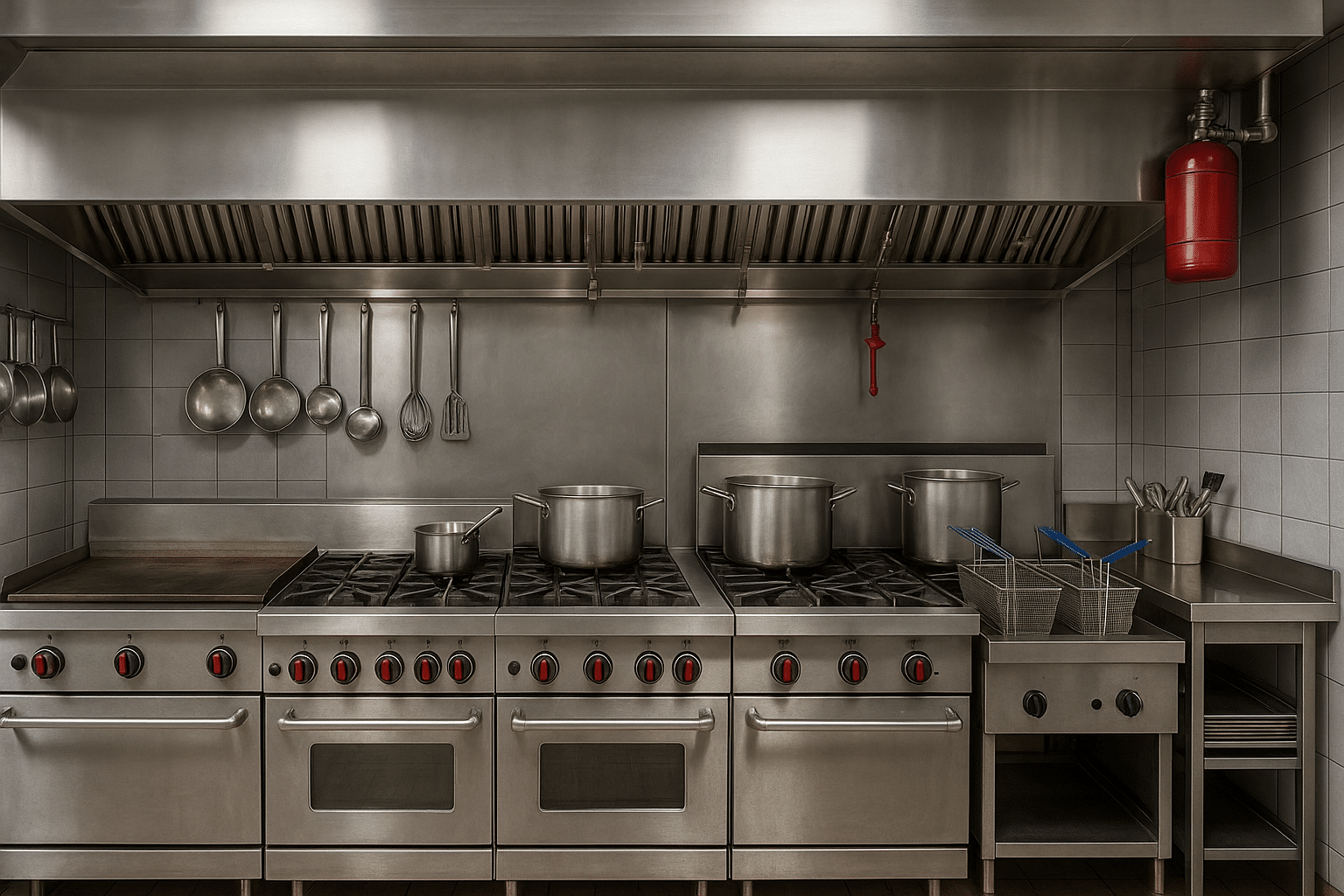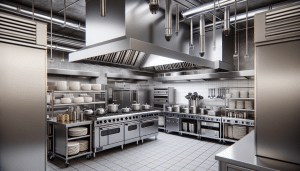Running a busy restaurant in Salt Lake City means juggling menus, staff, suppliers — and a surprising amount of paperwork and inspections. You probably already know that a greasy hood is a fire hazard; what you might not realize is how small maintenance gaps can turn into big fines, closures, or worse. This guide gives business owners a straightforward, usable checklist for Commercial kitchen hood fire code compliance, with clear steps, real-world tips, and the kind of practical advice that helps restaurants, cafes, and institutional kitchens stay safe and open.
Why hood compliance actually matters (and why it’s more than just a sticker)
Keeping your hood system compliant isn’t a cosmetic thing — it’s life-safety. The hood, ducts, fans, and fire suppression work together to stop Grease buildup and stop fires from spreading. Ignore them, and you risk property damage, interrupted service, and painful insurance claims. You might think an occasional wipe-down is enough; here’s the thing — grease hides where you can’t see it, and codes like NFPA 96 require routines nobody can skip.
You know what? It sounds strict because it is. But that strictness keeps people safe and helps your business run. Honest maintenance pays off: fewer shutdowns, better insurance rates, and a calmer kitchen during peak hours.
Daily and weekly basics — the small stuff that makes a big difference
Think of daily tasks as your line cook’s mise en place for safety. They’re quick, they matter, and they add up.
- Daily: Wipe down the hood exterior and filters after the last rush. Check for obvious smoke stains, odd smells, or damaged filters.
- Weekly: Remove and clean filters thoroughly; inspect for tears or warping. Check that the Exhaust fan runs smoothly — no wobble or strange vibration.
- During service: Make sure hood lighting works and is protected; poor lighting hides problems.
Those tiny chores take minutes but they’re worth it. Mild repetition helps — do them every day, like clockwork. It’s obviously not glamorous, but it prevents the big, ugly messes later.
Monthly and quarterly checks — the things that require a ladder and an eye for detail
Monthly checks should be a bit more thorough; quarterly checks often involve professionals.
- Monthly: Inspect duct clean-outs if accessible; look for grease drips, animal nesting, or water intrusion. Test manual release switches for the suppression system (do this gently and record it).
- Quarterly: Clean filters with degreaser, check hood baffles, and record the condition. If you cook fatty foods every day (think fry houses or BBQ joints), you might need more frequent cleanings.
- Recordkeeping: Keep a log with dates, who did the work, and any anomalies. Inspectors love neat logs; insurance companies do too.
This is where businesses sometimes contradict themselves: they want to save money by spacing cleanings out, but that can cost more later. Explain to your managers why those quarterly entries matter — and then make sure they happen.
Annual and semi-annual: professional cleanings and certifications
Here the standards tighten. Many jurisdictions, Salt Lake City included, expect certain systems to be professionally serviced and certified on schedule.
- Semi-annual or annual professional hood cleaning: Follow NFPA 96 guidance. The frequency depends on cooking type: light cooking might be annual; heavy charbroiling could be monthly.
- Fire suppression inspection: Have a certified technician inspect and certify your Ansul or other system. Hose nozzles, fusible links, and cylinders need attention.
- Exhaust fan and motor maintenance: Bearings, belts, and electrical connections should be checked by a licensed tech.
That chart of frequencies — it’s not just bureaucracy. It’s based on how quickly grease accumulates. Ask your service provider to give you a recommended schedule based on your menu. They can explain the difference between light, moderate, and heavy grease loads in plain terms.
Suppression systems are the heart of hood fire protection. They’re required to be maintained, tagged, and ready to fire when needed.
- Monthly visual inspections: Check the system’s gauges, nozzles, and control components. Make sure the indicator is in the normal range.
- Semi-annual mechanical inspection: A certified agent should test the fusible links, manual pull, and release mechanism. Cylinders need hydrostatic testing per manufacturer schedules.
- Keep the tags current: Replace worn inspection tags. Missing tags are an easy fail on an inspection.
No one likes surprise inspections — except maybe the inspector. Keep documentation handy. If your system uses UL 300 suppression, note that newer hoods and cook lines may require this retrofitted system; older systems might not be adequate.
Documentation, permits, and working with Salt Lake City inspectors
Records are your best friend when inspections happen. Permits and paperwork prove you care and keep everyone safe.
- Maintain a logbook: Include cleanings, inspections, repairs, and suppression tests. Date everything.
- Permit renewals: Know your local SLC requirements for operating permits, and renew them before they expire.
- When an inspector arrives: Be cooperative; offer the logbook and answer questions. If there’s a violation, get a correction plan on paper — and follow it.
Here’s a mild contradiction: sometimes inspectors are strict, and sometimes they seem lenient. That inconsistency isn’t the problem — inconsistent documentation is. Keep neat, consistent records and you’ll be prepared for either kind of inspection.
Common pitfalls local businesses make (and quick fixes)
Salt Lake City kitchens face some local quirks — dusty winters, heavy grease in comfort-food joints, and inspectors who know the score. Here are things people mess up.
- Skipping Filter maintenance: Filters clogged with grease are the number one issue. Solution: assign filter checks to a trusted staff member after each shift.
- Ignoring the ductwork: Grease in ducts is hidden and dangerous. Solution: schedule professional duct cleaning on a sensible timeline.
- Poor recordkeeping: Missing logs = instant headache. Solution: use a simple app (like ServiceM8 or a Google Sheet) and keep backups.
Honestly, most fixes don’t cost a fortune. They just require consistency. Treat hood care like payroll — you wouldn’t skip paying staff; don’t skip these tasks.
Who this checklist helps — and how to make it part of your routine
This guide is written for business owners, general managers, and kitchen supervisors in Salt Lake City who want practical compliance that fits into a busy workday. It helps by laying out clear steps, giving language to use with staff and inspectors, and mapping when to hire professionals.
Start small: implement the daily checklist this week. Then schedule a quarterly professional cleaning. Keep your logbook in the manager’s office or on a shared cloud drive. You’ll find compliance feels less like a burden and more like insurance for your livelihood.
Need help staying compliant? We can make it simple.
If you’d rather focus on food and staff and leave the hood details to someone who eats, breathes, and cleans grease (figuratively), Utah Hood Cleaning is here for Salt Lake City kitchens. We handle scheduled cleanings, suppression system checks, and the paperwork inspectors want to see. No drama. Just reliable service and clear records.
Call us at 801-853-8155 or click Request a Free Quote to get a no-pressure estimate. Let’s keep your kitchen safe, open, and running — so you can do what you do best: feed the people.




